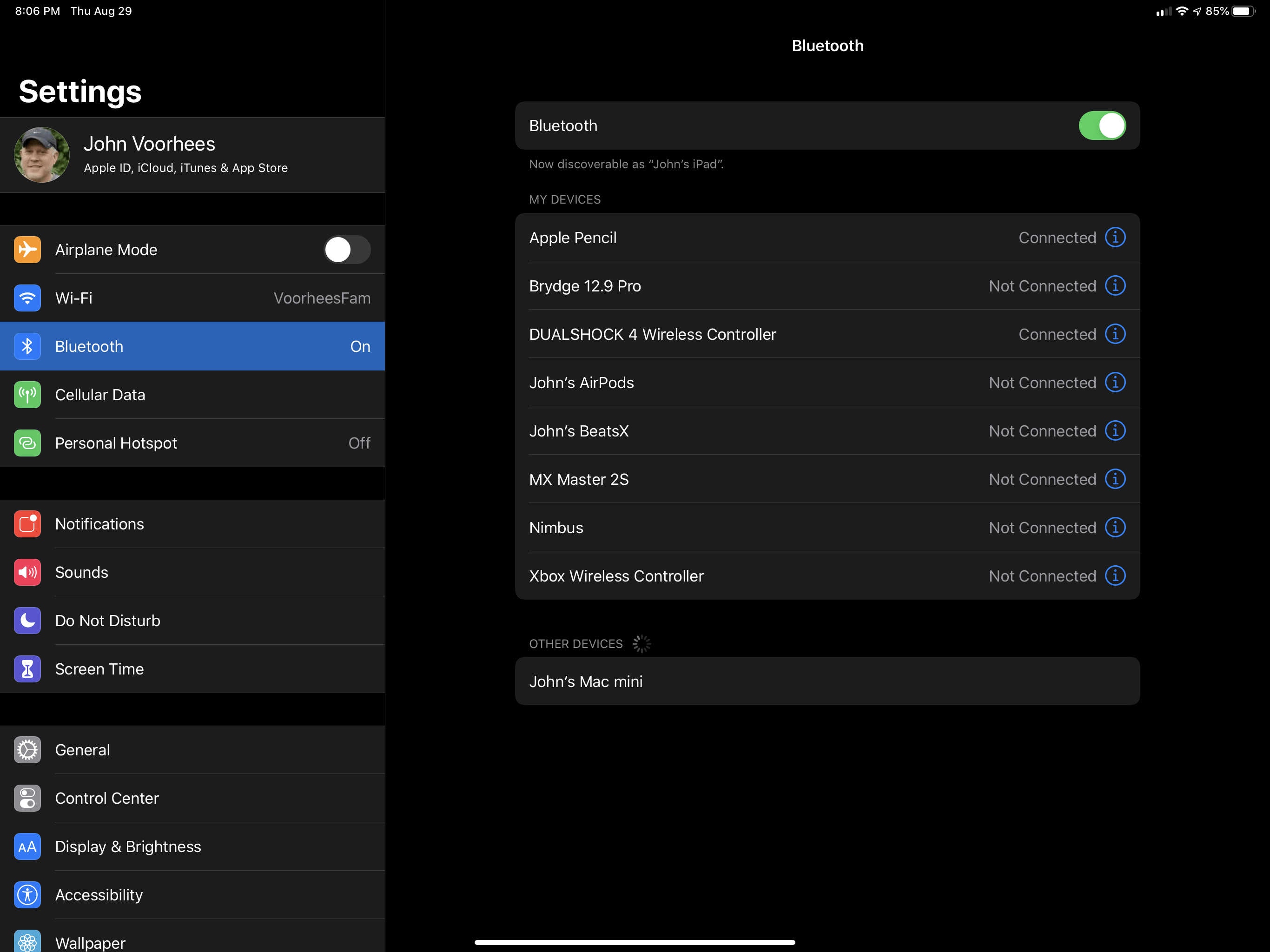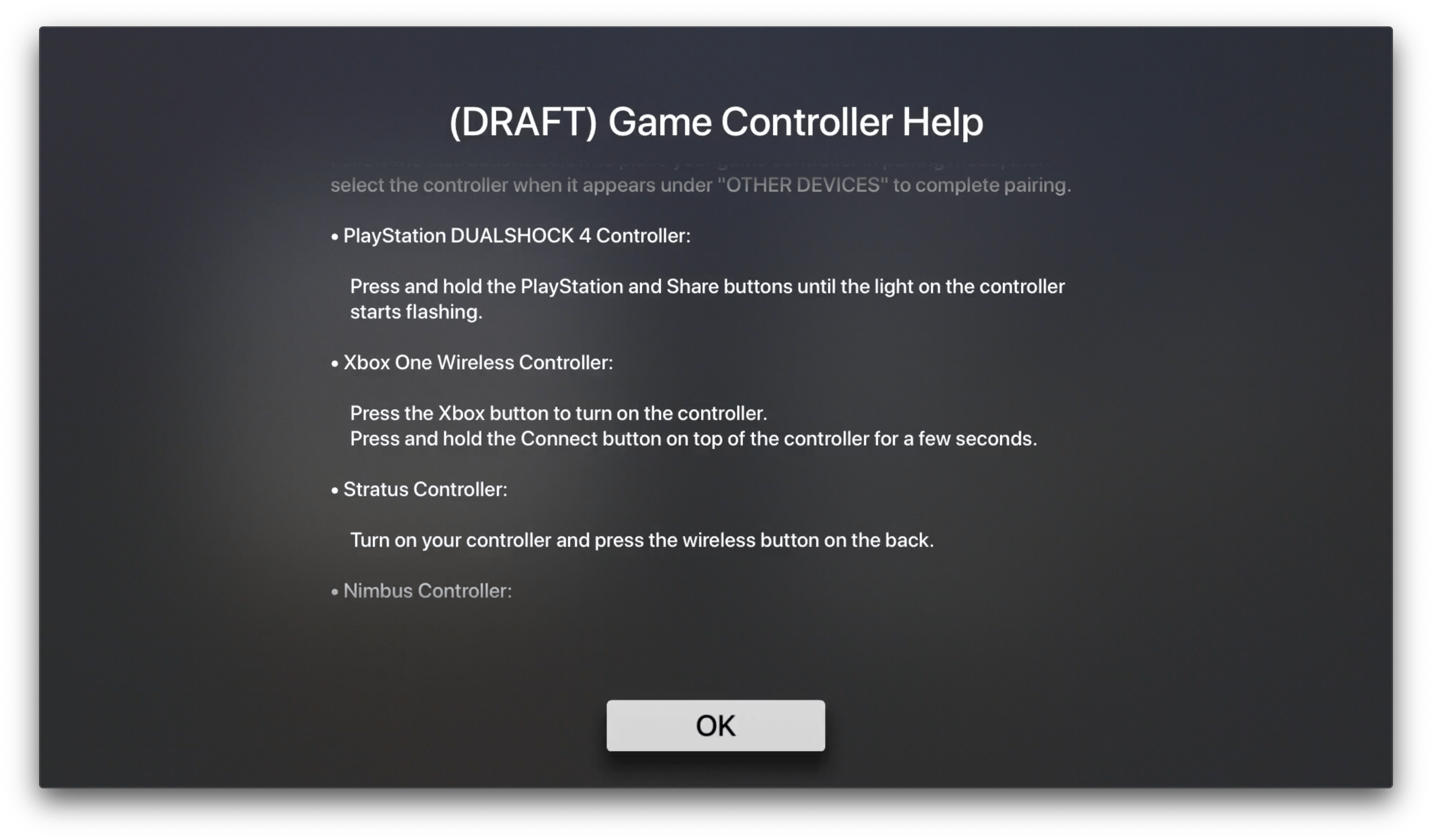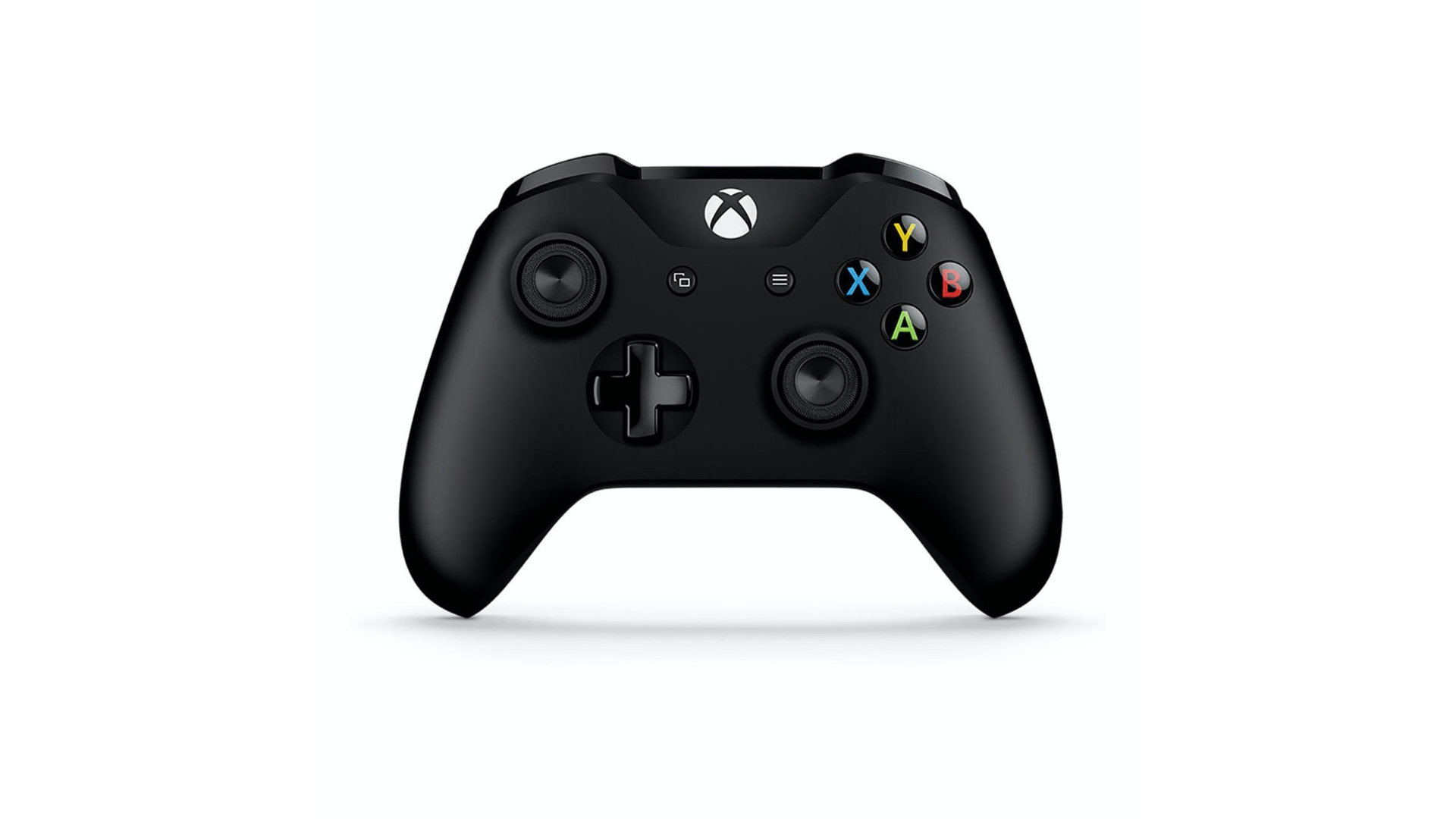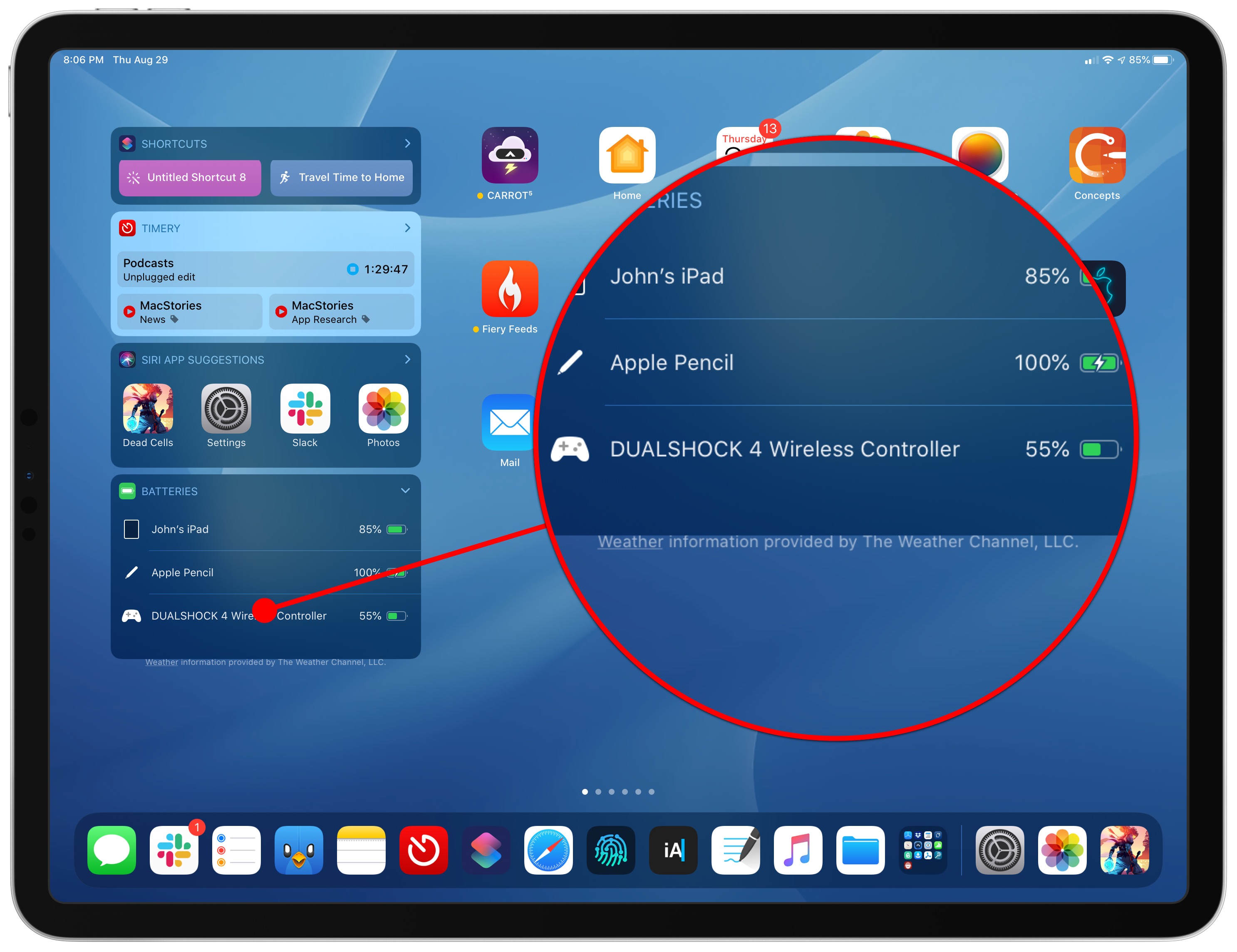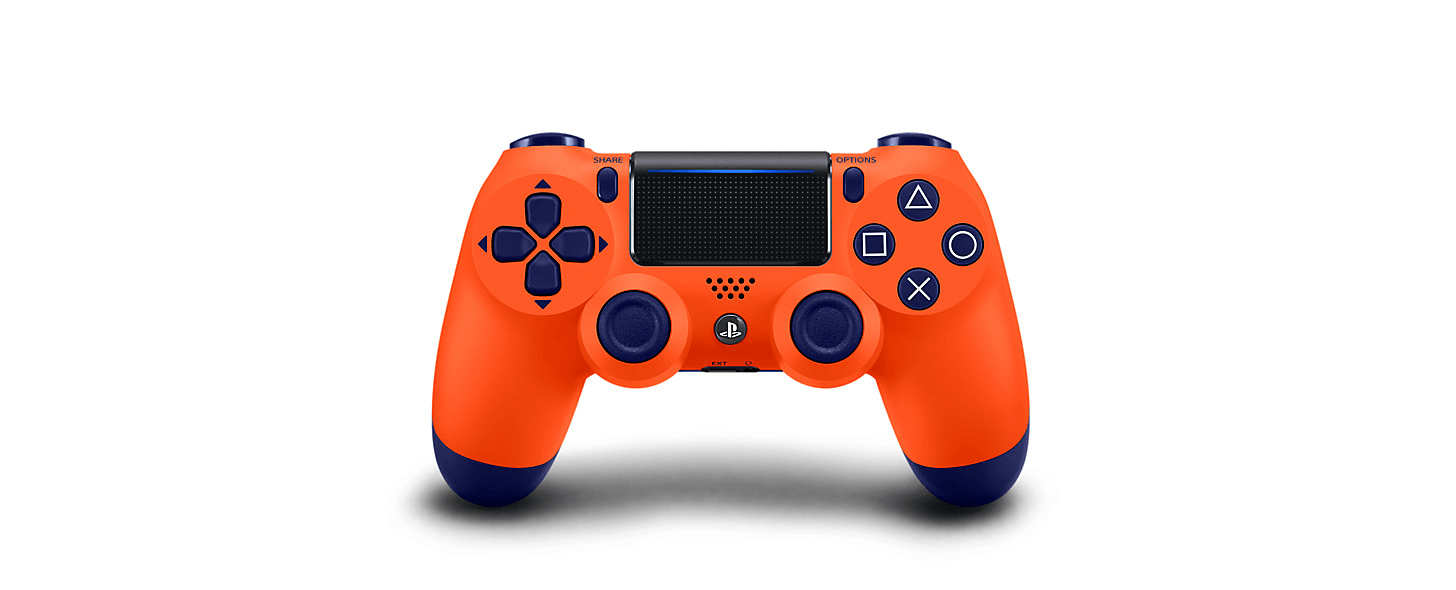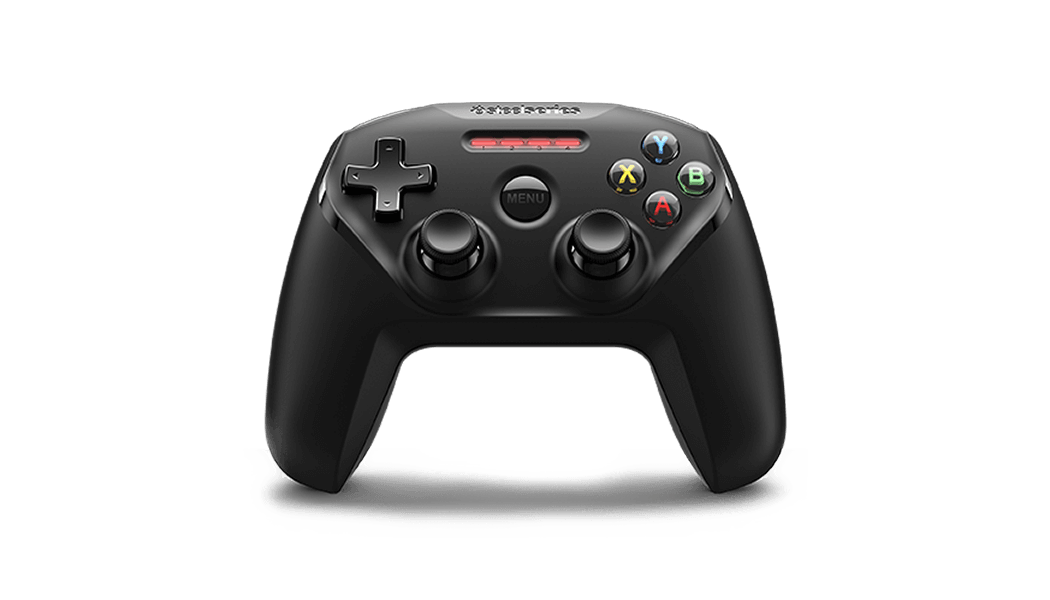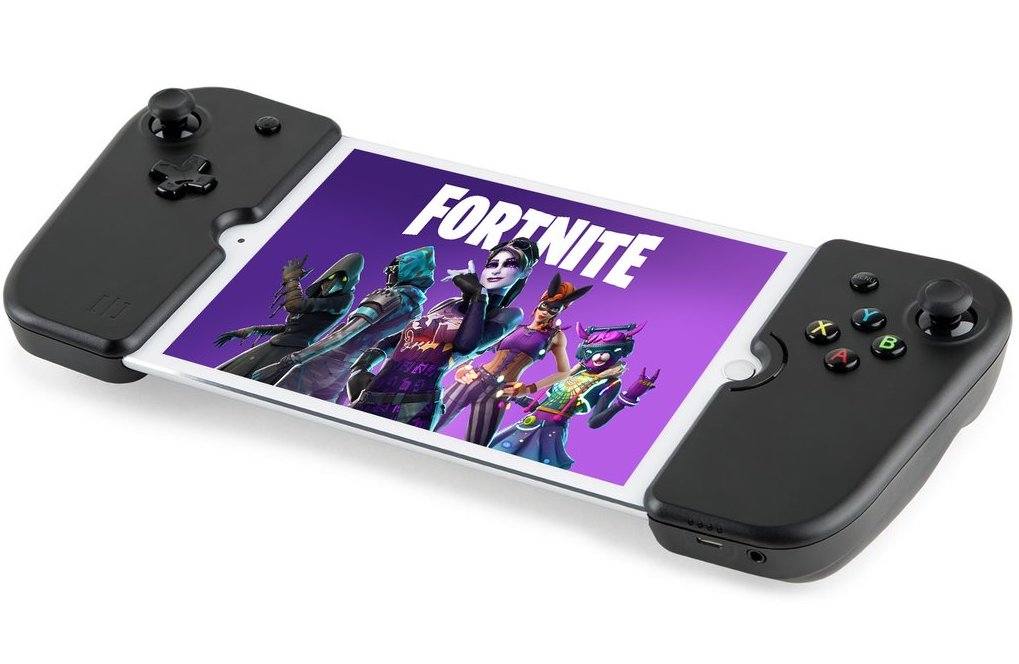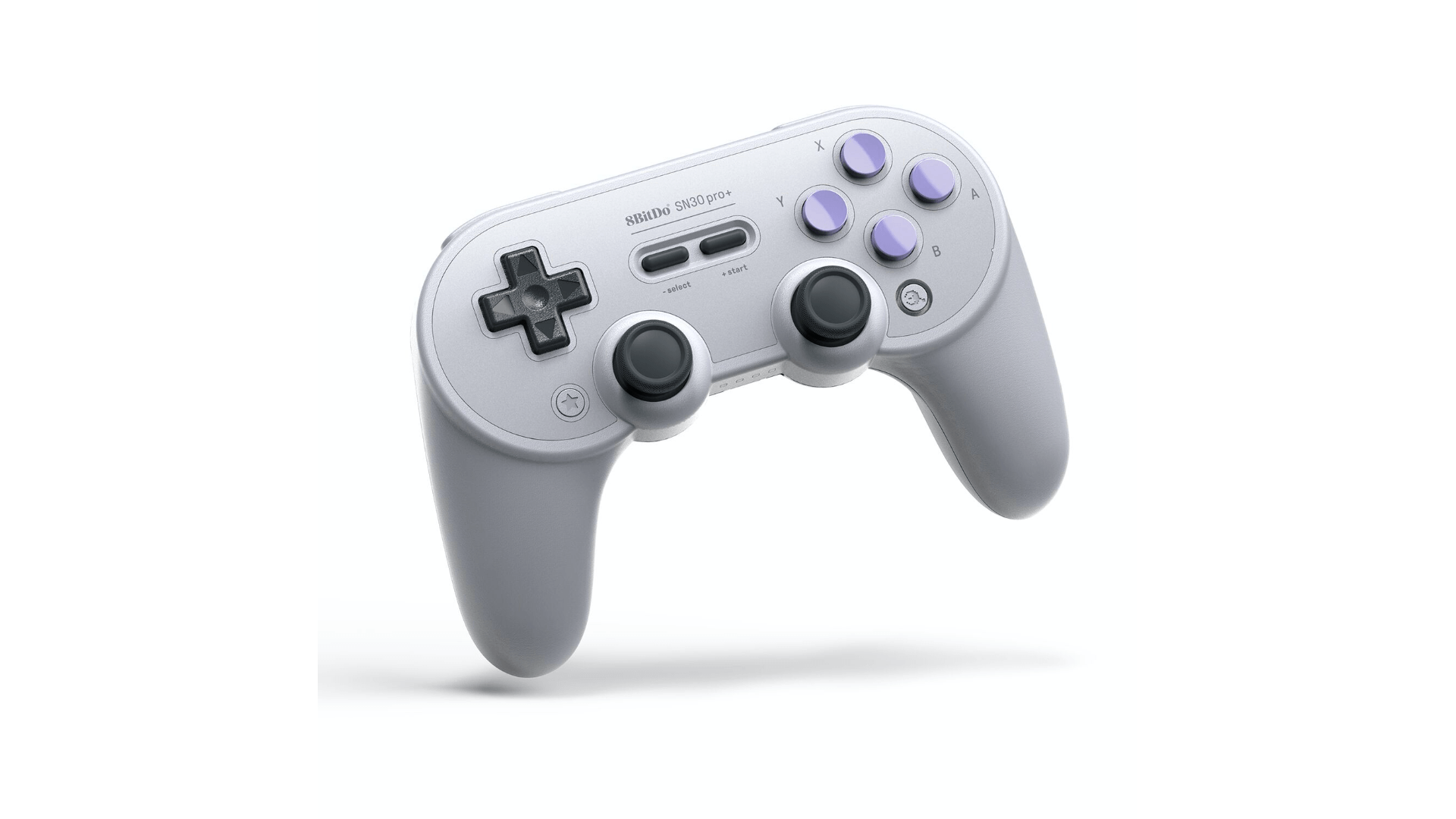
It’s hard to believe it’s been nearly six years since Apple added game controller support to iOS. The big news at WWDC in 2013 was the iOS 7 redesign, but for game developers, it was rivaled by the announcement that third-party Made For iPhone (MFi) controllers were coming.
The game press and developers understood the potential of controller support immediately. Even though it wasn’t announced there, Chris Plante of Polygon declared controller support the biggest story of E3, the game industry trade show that was happening at the same time as WWDC. Plante imagined that:
If Apple finds a way to standardize traditional controls, every iOS device will become a transportable console. In a year, both iPhones and iPads will approach the processing power of the current-generation devices. Companies will have the ability to port controller-based games for the mobile devices in millions of pockets — an install-base far greater than they’ve ever had before.
Game industry veteran Gabe Newell, the co-founder of Valve, saw Apple’s entry as a big risk to companies making PC and console games:
The threat right now is that Apple has gained a huge amount of market share, and has a relatively obvious pathway towards entering the living room with their platform…I think Apple rolls the console guys really easily.
I was right there with them. iOS devices couldn’t match the power of a traditional console in 2013, but you could see that they were on a trajectory to get there. With the addition of controller support, Apple felt poised to make a meaningful run at incumbents like Sony and Microsoft.
It didn’t work out that way though. iOS’ controller support was rushed to market. Early controllers were priced at around $100, in part because of the requirements of the MFi certification, and they couldn’t match the quality of controllers from Sony and Microsoft.
As anticipated, controller support was extended to the Apple TV when its App Store launched in 2015. Initially, it looked as though Apple would allow game developers to require a controller. In the end, though, the company went an entirely different direction by requiring that games support the Apple TV Remote, a decision that complicated development and dumbed down controller integration to match the remote’s limited input methods. Apple changed course eventually, and now lets developers require controllers, but by the time of that change the damage had been done. Many developers had already lost interest in controller support. It didn’t help either that for a very long time, the App Store didn’t indicate which games were compatible with MFi controllers, leaving the void to be filled by third-party sites.
Last year, when I looked back at the history of games on the App Store for its tenth anniversary, I came away pessimistic about the future of games on Apple’s platforms. After a decade, I felt like we were still asking the same question that Federico posed in 2013:
Will Apple ever develop a culture and appreciation for gaming as a medium, not just an App Store category?
Sadly, Federico’s question remains as relevant today as it was six years ago. Still, I’m cautiously optimistic based on what’s happened in the past year. Part of that is the App Store editorial team’s excellent track record of championing high-quality games in the stories published on the App Store. Another factor is Apple Arcade, the game subscription service we still don’t know a lot about, but which appears designed to showcase high-quality, artistically important games.
The latest cause for optimism is Apple’s announcement at WWDC this past June that iOS, iPadOS, tvOS, and macOS would all support the Sony DualShock 4 and Bluetooth-based Xbox controllers when Apple’s OSes are updated this fall. The reaction from developers and other observers was a combination of surprise and excitement that was uncannily similar to the MFi announcement in 2013. Yet, the news begs the question: ‘How is this time any different?’ The answer to that question lies in how the new controllers work and the role they will play in Arcade.
There’s an elegance to the simplicity in what Apple has done to support Sony and Microsoft’s controllers. Modern controllers vary by manufacturer, but Sony’s and Microsoft’s share roughly the same button layout and functionality as MFi controllers. By abstracting away the differences between each controller in its Game Controller framework, Apple has designed a system that makes each controller equally easy to use.
Connecting
Like existing MFi controllers, Sony’s DualShock 4 controller and Microsoft’s Xbox One S and upcoming Elite 2 controllers work over a wireless Bluetooth connection. Each controller has a slightly different process for initiating Bluetooth paring, but from the standpoint of Apple’s hardware, it’s no different than pairing a Bluetooth keyboard or mouse. For Apple TV owners who may not have connected a Bluetooth device to that system before, Apple even has instructions for the DualShock 4 and Xbox One S controllers as well as the Nimbus and Stratus MFi controllers made by SteelSeries.
To connect the Xbox One S controller for the first time, you press the connect button on the front edge of the controller and wait for the Xbox logo to blink. On the DualShock controller, hold the PS and Share buttons down at the same time until the light bar on the front of the controller blinks. When the controller shows up in the devices section of whichever Apple OS you’re connecting to, tap or click on it to start the pairing process. The next time you want to connect a controller, it will already be in your list of Bluetooth devices, so all you need to do is press the PS or Xbox buttons on your controller to reconnect.
With Xbox controllers, it’s important to keep in mind that the only models that work with Apple devices are model number 1708, which is the one that comes with the Xbox One S, and the Xbox Elite 2 controller that was announced at E3 this year. Previous Xbox controller models don’t use Bluetooth and won’t work.
Once you connect a controller, you cannot connect another without disconnecting the first one because only one controller can be connected at a time. Also worth noting, with iOS and iPadOS 13.1, the Batteries Today widget will track your controller’s remaining battery power. Not even the PS4 or Xbox consoles report the exact battery percentage remaining like iOS and iPadOS 13.1 will.
Interestingly, the DualShock 4 controller also works with the iPad Pro tethered by a USB-C to Micro USB cable, but unfortunately, the sound doesn’t play. I tried Bluetooth headphones too, and still, there was no sound until the USB cable was unplugged. When I tried the same thing with my Xbox One S controller, it didn’t work at all. I don’t recommend playing with a tethered DualShock 4 controller, but the fact that it works, even a little bit, tells me that more can be done by Apple to expand the compatibility of these controllers with its hardware. It also highlights the versatility of USB-C, which can’t come fast enough to the rest of Apple’s iPads and the iPhone.
A humorous side effect of the interchangeability of Xbox One S and DualShock 4 controllers is that it gives players an indirect way to play their favorite PS4 games with an Xbox controller. PS4 Remote Play lets users stream games from a PS4 to an iOS device, and with controller support coming in the fall, you’ll be able to play those games with Sony’s or Microsoft’s controller. Of course, it’s indirect because you need to stream your PS4 games to an iOS device, but it serves to emphasize further the degree to which Apple’s Game Controller framework renders the hardware differences between controllers meaningless.
The Controls
Although the layout of controls on the DualShock 4 and Xbox One S controllers and their button labels are different, the experience of using them with Apple devices is remarkably similar. Apple has made every button, thumbstick, and trigger available for developers to use, except the DualShock controller’s PS and the Xbox One S controller’s Xbox button. Apple has accomplished this by abstracting away the differences between each controller in its Game Controller framework.

Developers can detect connected controllers and display the appropriate button labels or use their positional equivalents.
Controls are mapped to their positional equivalents so they correspond to the control layout of the MFi controller specification. For example, the DualShock’s ‘X’ and circle buttons map to the A and B buttons of an MFi controller. It’s a simple, but effective scheme that means any game that already uses the Game Controller framework to support MFi controllers will automatically work with the DualShock 4 and Xbox One S controllers when Apple’s updated OSes are released. I’ve tried several games with MFi controller support and am happy to report that in every case the games’ controls worked as I expected regardless of which controller I was using.
Apple has APIs for developers to detect if a controller is connected and display the correct button labels for things like in-game tutorials and hints. Alternatively, more generic graphics that correspond to the positional mapping of the controls can be used. Dead Cells is a good example of a recent game that takes the positional approach. It may be a while before games update their controller code, but even with something like Fez, which displays the MFi-equivalent button labels, it’s not that hard to figure out which buttons to press.

Dead Cells is a good example of a game that uses generic positional mapping of controls for in-game hints.
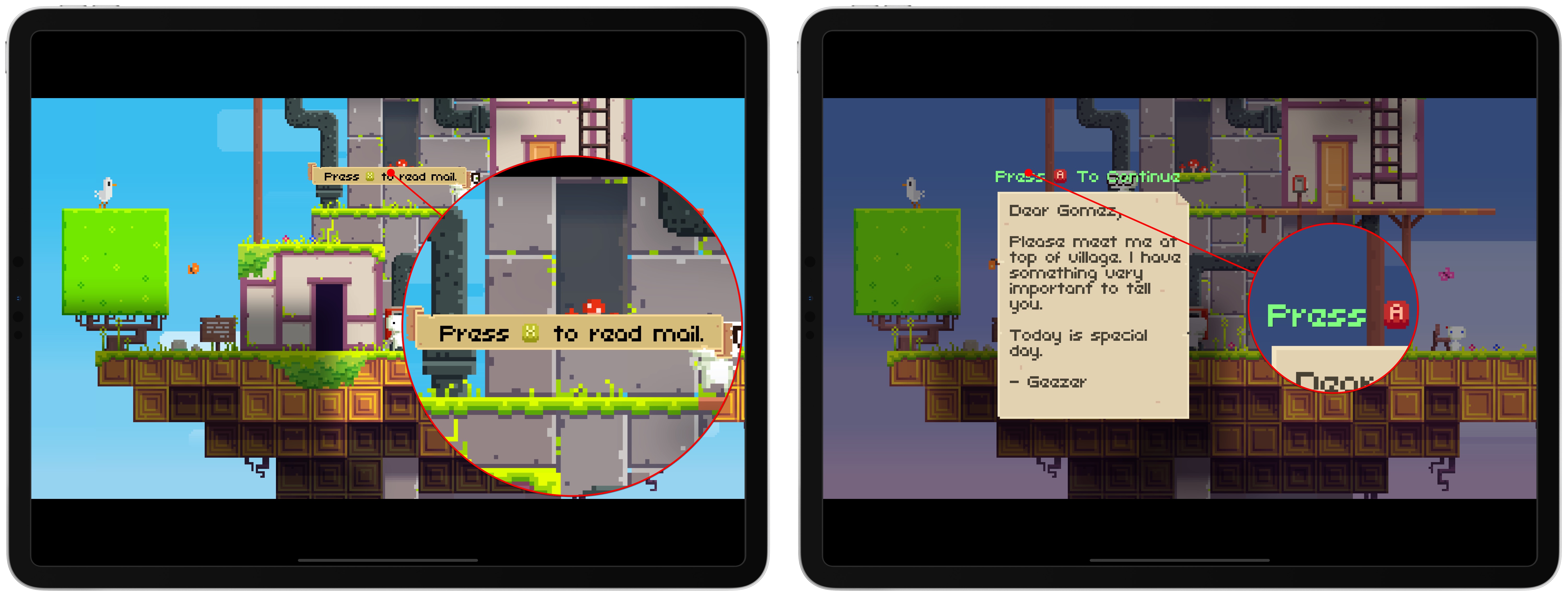
In contrast, Fez uses the MFi controller spec’s labels, which don’t correspond to the DualShock 4 controller.
The Importance of Sony and Microsoft Controllers
From the perspective of users, the differences between MFi controllers and Sony and Microsoft’s offerings are minimal. However, that doesn’t necessarily mean the new integrations will suffer the same lackluster adoption as MFi controllers have. Although I remain skeptical, there are a couple reasons that lead me to believe this time things could be different.
The biggest reason is simple: millions of people already own Sony and Microsoft controllers. On top of that, Sony and Microsoft make well-designed, high-quality controllers. Gamers have their preferences between the two, but the build quality of each is undeniable and surpasses existing MFi controllers.
Sony has sold over 100 million PS4s and although Microsoft hasn’t reported Xbox One sales numbers since 2015, the conventional wisdom is that tens of millions have been sold. That’s a big existing install base of controllers.
By adding support for Sony and Microsoft controllers, Apple is increasing the number of potential users by a substantial order of magnitude, which, in turn, has the potential to attract more developers too.
In contrast, the MFi controller market today is downright anemic. When they first debuted, the trouble with MFi controllers was that they were an additional purchase on top of an iOS device or Apple TV that cost as much or more than a console controller, but without the same build quality. Add to that the fact that early developer support was spotty, and purchasing another controller to use with Apple devices wasn’t very compelling.
One of the best of the lot is the SteelSeries Nimbus controller, which debuted in 2015. It’s a good controller, though it’s a little chunky for my tastes and not as solidly built as Microsoft and Sony’s offerings. The Nimbus connects via Bluetooth, has a Lightning connector for charging, and a $60 list price. That’s a little less than the list prices of Sony and Microsoft’s controllers, but those controllers can often be found on sale for less than the Nimbus. Also, four years after its release, SteelSeries still hasn’t released a follow-up to the Nimbus, even though it has released newer options for Android devices.
I’ve had a SteelSeries Nimbus controller for four years and have hardly ever used it, and when I do, it usually needs charging. It’s not a terrible controller, but it’s the kind of accessory that winds up in the bottom of a drawer and is hard to find. In contrast, we’ve had a PS4 in our home just about as long, and there’s always a controller that’s charged up and within easy reach because the PS4 gets used regularly. I suspect that is true for many people and that the familiarity and ability to use a PS4 or Xbox controller without incurring the cost or clutter of an MFi controller will create demand for controller support among users.
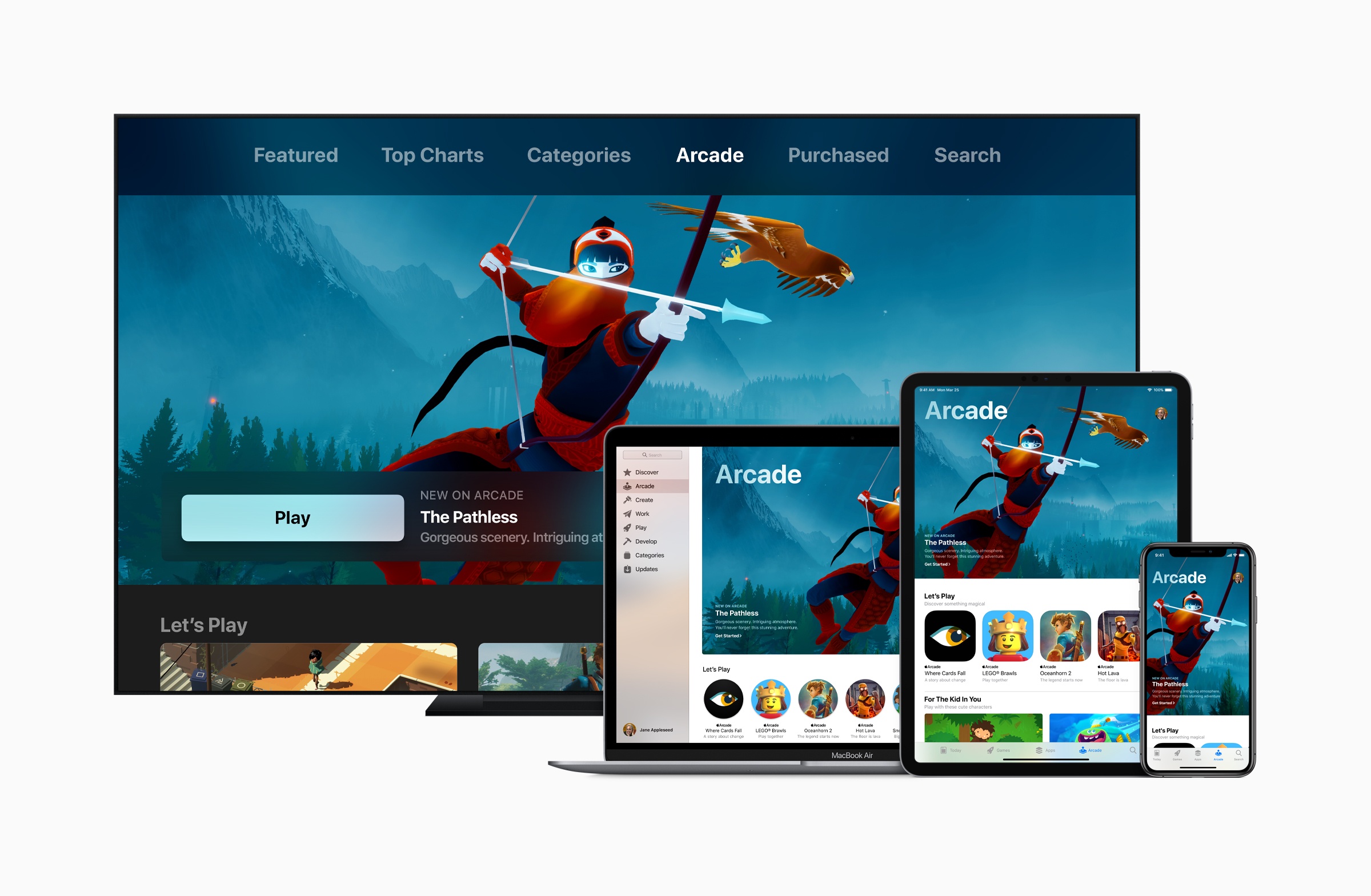
I suspect Apple Arcade will help too. Arcade, which will debut this fall, is Apple’s Netflix-like game subscription service that will offer a curated collection of over 100 games at launch. Those games will work across iOS, iPadOS, tvOS, and the Mac. Based on what we know today, it doesn’t appear that controller support will be required for Arcade games. Nonetheless, having a unified framework for controller support and a collection of games that work on all of Apple’s devices should make supporting controllers more attractive to developers of the sort of new, premium games included in Arcade. If a critical mass of high-quality games works with controllers, that could also pressure developers of other games to follow suit.
What Will Become of MFi Controllers?
Existing MFi controllers will continue to work on Apple’s platforms, although the outlook for the already-beleaguered category isn’t bright. With its announcement, Apple eliminated the need for millions of gamers to ever consider an MFi controller. After all, most MFi controllers don’t offer anything more than the cheaper, better alternatives from Sony and Microsoft.
The one exception may be controllers like the Gamevice line that integrates with iPhone and iPad hardware. Gamevice controllers split the physical controls in half, a little like a Nintendo Switch. The Gamevice wraps around an iPhone or iPad and uses its Lightning connector for power and passing controller input to games. I’ve used the iPad mini version of the Gamevice, and it’s an excellent way to play landscape-oriented games, though I don’t think I’d want to use it with any device bigger than the mini.
I’ve also tried a controller from Rotor Riot because until iOS 13 is released, it’s the only controller that has clickable thumbstick buttons. Rotor Riot is a drone accessory maker, and its controller can be used to navigate drones as well as play games. The controller comes with a bracket for your iPhone that sits above the controller as you play. The quality of the controller is similar to the Nimbus, but I don’t like playing games with my iPhone perched above the controller because it makes the whole setup top-heavy and tiring to use for very long. Like the Gamevice, the Rotor Riot controller operates over a Lightning cable that’s attached to the device, making it an alternative that from a practical standpoint only works with an iPhone.
An Unofficial Alternative
Interestingly, there’s a wired alternative for the iPad Pro that Apple hasn’t mentioned anywhere. 8BitDo recently released a controller called the SN30 Pro+ that charges via USB-C. I’ve tried a few of 8BitDo’s controllers in the past for things like my SNES Classic Edition, but the SN30 Pro+ controller is on a different level altogether. The controller’s thumbsticks, triggers, and vibration can all be adjusted with a Windows app, and buttons can be remapped and programmed to play macros. On top of that, the SN30 Pro+ is incredibly well-built, balanced, and works with a ton of different systems.
8BitDo advertises the SN30 Pro+ as compatible with the Switch, Android, macOS, Steam, and Raspberry Pi. The SN30 Pro+ can’t connect over Bluetooth to iOS devices or the Apple TV, but it turns out that it does work as a fully-functional wired controller for the iPad Pro when connected with a USB-C cable. According to support emails posted by Reddit users, 8BitDo says it is working on wireless compatibility too.
If you’re looking for a general-purpose controller that works with a lot of different systems including the Nintendo Switch, the SN30 Pro+ is a fantastic option. The build-quality surpasses that of the MFi controllers I’ve tried, and it’s customizable for people interested in that. Although I’d prefer to play wirelessly with my SN30 Pro+ on both iOS and the Apple TV, playing wired on an iPad Pro propped up in a Smart Keyboard Folio case is a better experience than I expected.
With the assistance of a USB-C hub, you can even charge your iPad Pro while playing with a wired SN30 Pro+ controller. I connected my HyperDrive Slim 8-in-1 hub to my iPad Pro. Then, I used a USB-A to USB-C cable to connect my SN30 Pro+ to the hub and a USB-C to USB-C cable to connect an external battery to the hub. It’s a neat little hack that is handy for battery-hungry games. Unfortunately, the same setup does not work with iPads that have Lightning connectors.
Controllers are just one part of the new direction Apple is taking gaming on its platforms. The first step was to separate games from other apps when the App Store was redesigned with iOS 11. Last year iOS 12.1 added L3 and R3 thumbstick button support. Now, Arcade is splitting off a curated subset of games that can be played in the living room, on the desktop, and on the go. It’s a unified, broad-based approach to games unlike any of Apple’s previous efforts.
Toward the end of researching this story, I started playing Dead Cells on iOS, which I reviewed last week. It’s a fantastic game that’s been out for a while on the desktop and consoles. It’s also exactly the type of game that would fit well on all of Apple’s devices, not just the iPhone and iPad. For now, however, it doesn’t support the Apple TV, and although you can play it on a Mac, it’s not available on the Mac App Store. I hope Arcade will help bring games like Dead Cells to all of Apple’s platforms. The prospect of having games I love with me whether I’m at home on the couch, at my desk, or on the go is exciting.
Arcade feels like a reboot of the strategy that seemed to be coming with iOS 7 back in 2013 but never materialized. Apple still isn’t selling a controller with the Apple TV, but this time it’s not trying to convince us that the Siri Remote is a controller. Instead, it’s got real game controllers and a strategy to integrate high-quality games not just with the Apple TV experience, but across all of its devices. Part of the glue that can hold the experience together across every device is the controller you use, and with DualShock 4 and Xbox One S controllers, Apple finally has first-rate controllers to fill that role.
I hope this time will be different. Perhaps it’s not too late for Apple to take on the console makers as Gabe Newell suggested it would in 2013. Ironically, this time around, if Apple is able to pull it off, it will be using its competitors’ own hardware against them.
My skepticism about Apple and gaming remains strong, but for the first time in a long while, there is cause for cautious optimism. Apple no longer seems satisfied with the status quo of earning 30% from In-App Purchases in casual, touch-based free-to-play games. With Arcade and third-party controller support, the pieces are in place to make Apple’s devices a worthy competitor to desktop PCs and consoles as a place to play the best creative work from today’s top game developers. I just hope the prospect of a new service revenue stream from Arcade is enough to encourage Apple to follow through this time.


